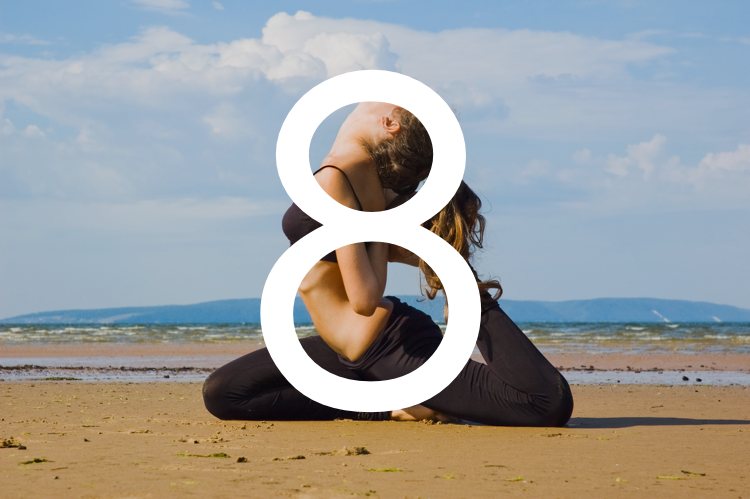I used to teach aerobics classes. Yep. The ‘go for the burn’ sort that encouraged red-faced attendees to crank out ten more leg lifts, fatigue be damned. But that was decades ago back in my twenties, before I discovered the joys of teaching Vinyasa yoga.
And while my group fitness teaching days prepared me somewhat for guiding students through asana, pranayama and self-study, I encountered more than a few challenges during my first yoga teacher training. What I thought would be easy as ABC turned out quite the opposite.
My first ‘practice teaching’ session at training rendered a big, fat ‘F’.
Thankfully with time, practice, and diligence, I’ve come a long way in my teaching, building a loyal following and network of fellow yoga teachers committed to this beautiful practice. But I find it helpful every now and then to remind myself of the key differences in teaching yoga verus a group fitness class. Here are some of them.
1. Love Your Students
Whoa. What a concept. In my group fitness teaching days, it was all about motivating students into action, by any means necessary. Tired? Give ‘em ten more pushups!
Fundamentally I knew this wasn’t right, and after taking my first yoga class in the basement of a cool, alt-ish fitness studio I was teaching at in Seattle (in other words, no Richard Simmons moves or Top 40 tunes allowed), I experienced how it felt to be loved by your teacher.
I stood out in my shiny leotard amongst a roomful of earthy Gumbys, but she somehow managed to make me feel welcome, supported, LOVED. So what if I couldn’t do Chaturanga? She gave me an appropriate modification, and inspired me to build up to the pose over time.
2. Talk, Don’t Shout
During my teacher training, my teacher delicately pointed out the difference between projecting and hollering. Apparently I was hollering. Time to tone it down. My previous power from the pulpit was so strong my dear students could barely hear their own breathing.
3. Guide, Don’t Direct
Specific alignment cues are a whole lot more effective than “C’mon, gimme more!” Cueing based on what I’m seeing (an ankle that needs to be tracked over the knee; offering a break in Child’s Pose after a challenging sequence, for example) deepens my connection with each student, and lets them know I’m on their side.
4. Get Out Of Their Way
Tough for students to go inward, or find their balance when the teacher is stomping around the room busting out a “whoop!” at random intervals. I’ve learned to move quietly, slowly, or not at all, as my students are steadying themselves in tree pose.
5. Practice, Not Perfect
A lot of fitness instructors, and sadly, even some yoga instructors I know, are in this business for the rock star factor. One studio I taught fitness classes at even had a little platform to teach on. Should we sell tickets at the door?
Certainly we need to demo a pose from time to time, but not ALL the time. Too much of this and our dear students start to develop unrealistic expectations of what their poses are supposed to look like.
I constantly encourage my students to incorporate the alignment cues to the best of their ability, on that given day, without any comparison to the teacher, how it looked yesterday, or anyone else in the room. They are perfect just as they are.
6. Be Approachable
I’ve learned through teaching yoga how vital it is relate to my students, and share that I, too, struggle with many of the same challenges in my practice and in life that they do. That means arriving early to greet them, and lingering after class to answer any questions or offer additional words of encouragement.
And most importantly, THANK them for taking precious time out of their day to attend my class.
7. Honor Rest Breaks
“Keep on going!” is no longer in my arsenal of cues. We spend enough time off the mat ignoring our bodies’ pleas for rest. If Child’s Pose or Sukhasana would feel amazing in lieu of Warrior II, then by all means take it. Seriously.
8. The Best Teachers Don’t Necessarily Have The Strongest Practice
I thought for a long time I couldn’t teach until I mastered every pose in the Yoga Journal guide. If I had kept that thought I’d still be hollering out ‘ten more pushups!’ in a group exercise class. After considering who my strongest yoga teachers were, I realized it had little to do with their personal practice, and everything to do with their ability to connect with me, and guide me safely in and out of poses.
I now teach with confidence, regardless of my limitations, and have learned new ways of deepening my own practice from my more advanced students.


